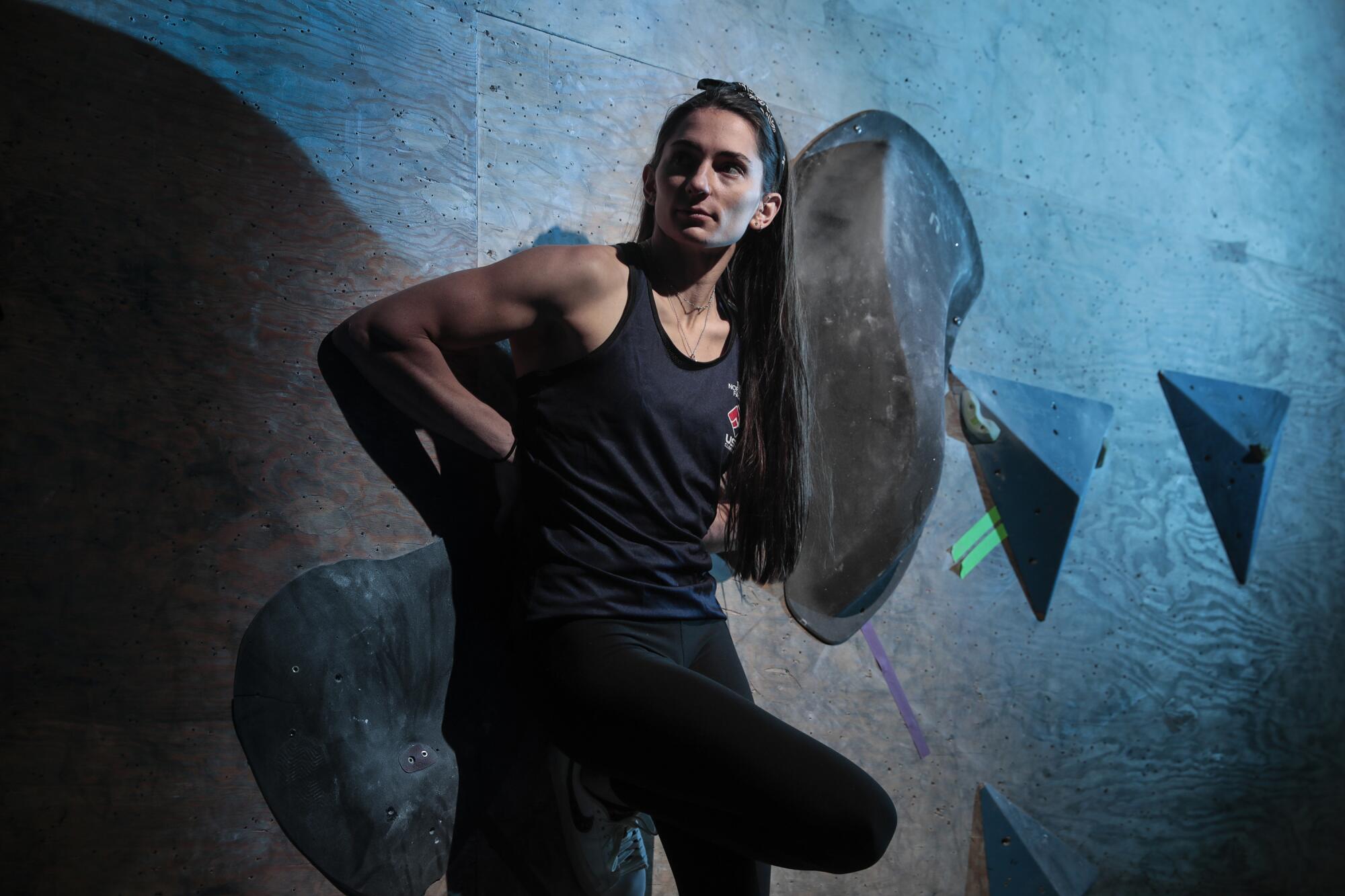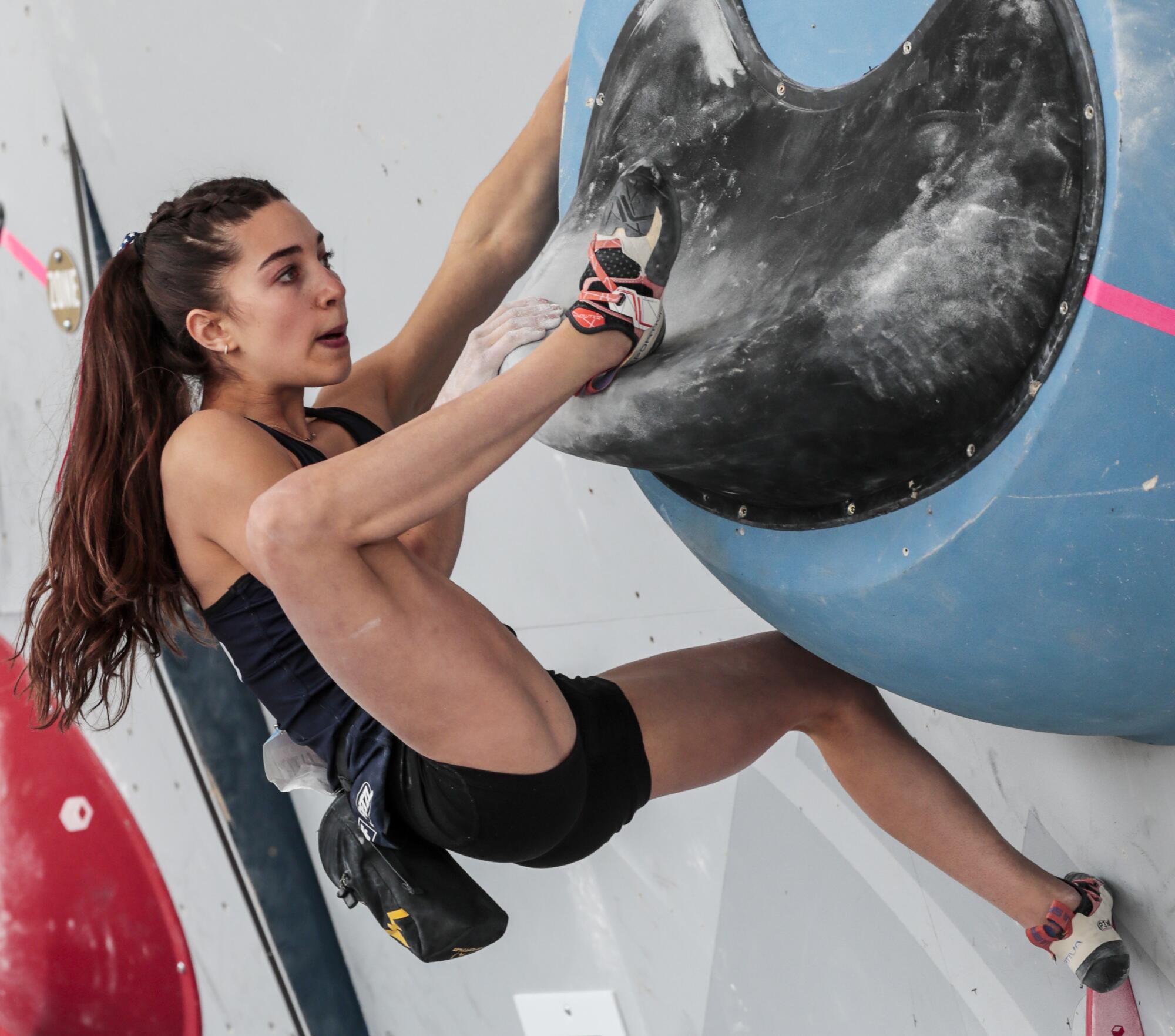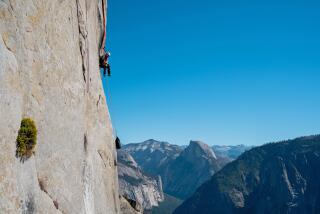
For those who have not yet seen the sport of speed climbing, the concept is fairly simple.
Imagine Spider-Man scrambling, blurry fast, up the side of a four-story building. Now picture another Spider-Man racing him, side-by-side, to the top.
The fact that mere humans — minus the radioactive spider bite — can scale a standard 50-foot competition wall, scurrying from one small climbing hold to the next, and tap the buzzer in about six seconds makes this new Olympic event all the more startling. Even for the athletes.
“In the moment, it feels slow,” says Colin Duffy, a member of the U.S. squad headed for Tokyo. “But afterward you don’t even remember what happened, it went by so fast.”
When sport climbing was added to the Olympic program for this summer, its international federation decided to combine the results of three events — bouldering, lead and speed — into one final score.

This represents a change for athletes who had traditionally specialized in one or two of the disciplines. As Czech climber Adam Ondra says in a YouTube video, “we are all new to this format and we are all playing the game with very unpredictable results.”
The bouldering segment features a 15-foot wall or “problem” with a complicated array of hand and foot holds — small nubs bolted in place. Athletes must immediately decipher this puzzle and choose the best path, known as a “beta.” They can make repeated attempts, stretching and hopping and balancing, attempting to reach the top within four minutes.
Subscribers get early access to this part of our Tokyo Olympics coverage
We’re offering L.A. Times subscribers first access to our preview of the 2021 games. Thank you for your support.
In lead climbing, the wall is much taller at nearly 50 feet and has an angled overhang. There are no retries — when a competitor falls, the highest point he or she attained stands as the recorded score.
Both of these disciplines involve problem-solving, with action that tends to be deliberate. American climber Kyra Condie says: “You have to evaluate as you’re doing it.”
These cautious games of chess probably won’t draw as much attention as the head-to-head racing and made-for-television chaos of the third segment.
In speed climbing, the holds are placed in standardized spots — the wall has looked exactly the same at every competition for some 15 years. There are only a few common betas, with climbers selecting the path that fits their size and strengths.
“In bouldering or lead you want to be in an open place, not angry, not overly competitive, happy to be there so you can be creative,” U.S. climber Nathaniel Coleman says. “In speed, you know what you’re going to do and you can take a more aggressive approach.”
For the uninitiated, keep an eye on a couple of factors at the beginning of each race.
Start-reaction time is important — anything between 0.1 and 0.2 seconds is good, anything above 0.3 not so much.
“I like to think about it as floating. When I’m smooth, that’s when I go fastest.”
— U.S. Olympic climber Brooke Raboutou
Then comes the possibility of a couple revolutionary maneuvers. The “Tomoa Skip” was invented by Japanese climber and medal favorite Tomoa Narasaki who, with a background in gymnastics, found a way to skip one of the early holds and take a straighter line up the wall.
“The Reza” is another early bypass popularized by Iranian climber Reza Alipour Shenazandifard.
The course is divided in two, with the lower half involving long reaches and big movements, followed by a second half where the holds are closer together, so the hands and feet must work more quickly.
“This discipline requires an incredible athleticism,” Ondra says. “A lot of dynamic power, especially in your legs, and good coordination.”
The best climbers will always look upward, focusing on their next hand hold while trusting muscle memory to put their feet in the right places. And they won’t stay on any hold for too long, trying to grasp and release as swiftly as possible.
“I like to think about it as floating,” team member and University of San Diego student Brooke Raboutou says. “When I’m smooth, that’s when I go fastest.”

Another thing that distinguishes speed climbing is the head-to-head competition. Raboutou gets motivated by having someone in her peripheral vision; it drives her to go a little harder. For Coleman, that incentive can be a problem.
“It can push you to go faster,” he says. “But it can definitely push you to go too fast where you slip.”
The decision to link all three climbing disciplines into a single, multiplied score has created a stir within the sport. Onda says that “speculation on whether it’s good or bad could go on forever.”
The international climbing federation hopes it will be a winning combination with viewers. The intense speed segment, in particular, might become a Summer Olympics version of curling — an event just quirky enough to attract a cult following.
“It can be really stressful putting everything you have into a six-second time period,” Duffy says. “One slip and that’s all you get.”
More to Read
Go beyond the scoreboard
Get the latest on L.A.'s teams in the daily Sports Report newsletter.
You may occasionally receive promotional content from the Los Angeles Times.







